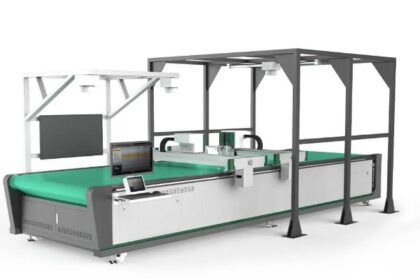The kitchen is often called the heart of a home, and its design plays a pivotal role in both aesthetics and functionality. Among the many elements that define a kitchen, kitchen cabinets are perhaps the most significant. They provide essential storage, determine the room’s style, and affect the efficiency of your cooking space. Choosing the right cabinets requires careful consideration of three key factors: style, functionality, and durability. With the right balance, you can create a kitchen that is beautiful, practical, and built to last.
1. Understanding Your Kitchen Style
Before diving into cabinet options, it’s important to define your kitchen’s overall style. Cabinets set the tone for the entire space, influencing colors, finishes, and design elements throughout the room.
-
Modern: Characterized by sleek, flat-panel doors, minimalistic hardware, and clean lines. Modern cabinets often come in neutral shades like white, gray, or black, though bold colors can also make a statement. These cabinets complement contemporary countertops, stainless steel appliances, and minimalist decor.
-
Traditional: Known for ornate detailing, raised panels, and rich wood finishes, traditional cabinets add a touch of elegance and timeless appeal. They often pair well with classic fixtures, warm lighting, and detailed backsplashes.
-
Transitional: This style bridges the gap between modern and traditional. Transitional cabinets combine clean lines with subtle details, creating a versatile look that can adapt to a variety of interior designs.
-
Rustic/Farmhouse: Featuring textured wood finishes, vintage-inspired hardware, and warm tones, these cabinets create a cozy and inviting kitchen environment. They are perfect for homes that prioritize a comfortable, lived-in feel.
Selecting a style that resonates with your taste and complements your home ensures a cohesive design and a visually appealing kitchen.
2. Prioritizing Functionality and Storage
While style sets the visual tone, functionality is the backbone of a practical kitchen. Cabinets need to meet your storage needs and enhance the efficiency of your cooking space.
-
Drawers vs. Doors: Deep drawers are ideal for pots, pans, and large kitchen tools, while traditional doors work well for pantry storage. Consider a combination that suits your habits.
-
Specialized Storage: Features like pull-out trays, lazy Susans, spice racks, and utensil organizers maximize space and accessibility. These elements ensure that items are easy to reach and that the kitchen remains organized.
-
Cabinet Layout: The placement of upper and lower cabinets should complement your workflow. Frequently used items should be within easy reach, and the layout should facilitate a smooth cooking process from prep to cleanup.
A functional kitchen reduces clutter, saves time, and creates a more enjoyable cooking experience.
3. Choosing Durable Materials
Durability is a critical factor because kitchen cabinets face constant use, exposure to moisture, and temperature fluctuations. The materials you choose affect both longevity and appearance:
-
Solid Wood: Offers exceptional durability and a premium, classic look. Though often more expensive, solid wood cabinets can withstand years of daily use and can be refinished if needed.
-
Plywood: Strong, stable, and resistant to warping, plywood is an excellent choice for cabinet boxes and shelving.
-
MDF (Medium-Density Fiberboard): Cost-effective and smooth, MDF is resistant to cracking and warping. It is ideal for painted finishes and contemporary designs.
In addition to the base material, consider the finish. Laminates, veneers, or painted surfaces provide extra protection against scratches, moisture, and stains, ensuring your cabinets maintain their appearance over time.
4. Hardware Matters
The right hardware enhances both the look and usability of your cabinets. Handles, knobs, and hinges should complement the cabinet style while being sturdy and durable. Options like brushed nickel, matte black, or brass finishes can dramatically impact the kitchen’s aesthetic.
Soft-close hinges and drawers are highly recommended, as they prevent slamming, reduce wear and tear, and add a sense of luxury to your kitchen. Investing in quality hardware ensures smoother operation and extends the life of your cabinets.
5. Color and Finish Considerations
Color choice is one of the most noticeable aspects of cabinets, influencing the kitchen’s ambiance and perception of space:
-
Light Colors: White, cream, or pastel shades make small kitchens appear larger and brighter.
-
Dark Colors: Deep hues like navy, gray, or black add sophistication and create a striking contrast with lighter countertops or backsplashes.
-
Wood Finishes: Warm natural tones provide a welcoming atmosphere and pair well with rustic or traditional designs.
The finish should also be durable and easy to clean, especially in high-traffic kitchens, where grease, moisture, and daily wear can affect cabinet surfaces.
6. Budgeting for Cabinets
Kitchen cabinets are a major investment, so it’s essential to balance style, quality, and cost.
-
Prefabricated Cabinets: Affordable and readily available, these cabinets are easy to install and come in a variety of standard sizes and styles.
-
Semi-Custom Cabinets: Allow for some customization in size, finish, or design while remaining more affordable than fully custom options.
-
Custom Cabinets: Fully tailored to your space, offering unique designs, finishes, and configurations. Though more expensive, custom cabinets provide the perfect fit and maximize functionality.
Setting a realistic budget ensures you get the cabinets you want without compromising quality or design.
7. Long-Term Needs and Flexibility
Your kitchen cabinets should not only meet current requirements but also anticipate future needs. Consider family growth, lifestyle changes, or potential kitchen upgrades. Modular or adjustable storage solutions provide flexibility, allowing you to adapt your kitchen over time without major renovations.
8. Trends and Modern Features
While classic designs are timeless, it’s worth exploring contemporary trends that enhance usability and style:
-
Open shelving combined with closed cabinetry for a modern, airy look.
-
Mixed-material designs that pair wood with metal, glass, or laminates.
-
Bold colors like matte black, forest green, or navy for statement kitchens.
-
Smart storage solutions, including pull-out pantries, concealed trash bins, and adjustable drawer organizers.
Incorporating trends thoughtfully ensures your kitchen remains stylish without quickly going out of fashion.
Conclusion
Choosing the right kitchen cabinets Brampton requires a careful balance of style, functionality, durability, and budget. Cabinets define the visual character of your kitchen while providing essential storage and usability. By focusing on design preferences, workflow efficiency, high-quality materials, and long-term needs, you can create a kitchen that is both beautiful and practical.
Investing in well-chosen cabinets enhances daily living, makes cooking more efficient, and increases the long-term value of your home. Whether you opt for modern, traditional, or transitional designs, the right kitchen cabinets transform your space into a functional and inviting heart of your home.


